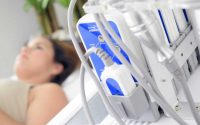Routine Cleaning of Medical Professionals’ Cellphones May Help Cut Spread of Infection
NEW YORK (Reuters Health) – The risk of infection spread might be cut if intensive-care unit (ICU) staff regularly disinfected their cellphones, a new study suggests.
After ICU staff nurses began regularly cleaning their cellphones, the bioburden of personal and shared phones dropped significantly, researchers report in the American Journal of Infection Control.
“Opportunities for the spread of infectious disease can hide in plain sight,” said the study’s first author, Jennifer Kopp, a registered nurse and a graduate student at Baylor College of Medicine in Houston, Texas. “In our busy ICU, I noticed how frequently our work phones demanded our attention and interaction. These phones were frequently touched, but infrequently cleaned. I identified this as an opportunity to engage our staff nurses in playing an active role to reduce the spread of infectious disease.”
The findings might apply more broadly to anyone using a cellphone.
“This study objectively demonstrated something I think we all may suspect: our cell phones can be quite contaminated,” Kopp told Reuters Health by email. “Our data focused on the cell phones of ICU nurses. This is a population that arguably has more frequent interaction with microbes than an average cellphone user. While this may be true, think about how often you may use your phone in the restroom or while preparing a meal. How often do you indiscriminately set it on a nearby surface? After some honest reflection, one may decide that routinely disinfecting their phone is a worthwhile endeavor.”
To take a closer look at the impact of regular cellphone cleaning, Kopp and her colleagues conducted a pre-post, quasi-experimental study in a single 20-bed cardiovascular ICU at a tertiary care academic medical institution from 2019 to 2020.
Although nurse participants were followed till the end of the study, their data was deidentified, which meant that repeated analysis was not possible. Nurses received education electronically, verbal and visual reminders and strategic disinfection supplies.
Along with nurse-directed cellphone disinfections, shared unit phones were disinfected at the end of each 12-hour shift. Cellphones were collected about 30 minutes prior to the end of each shift by an administrative assistant, who would then remove the phone from its battery pack, wipe it and the battery pack with a QAB disinfecting wipe. Then the phones were allowed to dry, reassembled and placed into the multi-phone charging unit for the next shift.
Included in the analysis were data from 300 swab samples that were collected during the 12-month study period from 30 personal phones and 30 shared unit phones. The researchers analyzed the swabs with a SystemSURE Plus luminometer. The device uses bioluminescence to detect residual organic matter as an indicator of surface cleanliness, with the result expressed in relative light units (RLU).
In their analysis of the year’s worth of data, Kopp and her colleagues found that RLUs for personal cellphones decreased from baseline to 12-months after the intervention (geometric mean, 497 vs. 63 RLU; P<0.001).
The measured RLU from staff nurses’ shared unit phones also decreased from baseline to 12 months (geometric mean, 417 vs. 46 RLU; P<0.001), with RLU values dropping from one to three to six months after the intervention.
This is an “interesting study highlighting the importance of disinfecting hands as well as personal devices before entering patient care areas,” said Dr. Geetika Sood, an assistant professor of medicine at Johns Hopkins University in Baltimore, Maryland.
“Johns Hopkins Bayview has deployed UV light devices to help disinfect phones and tablets in all of our inpatient units,” Dr. Sood, who was not involved in the new work, told Reuters Health by email.
SOURCE: https://bit.ly/3NEKg1I American Journal of Infection Control, online May 12, 2022.
Source: Read Full Article


